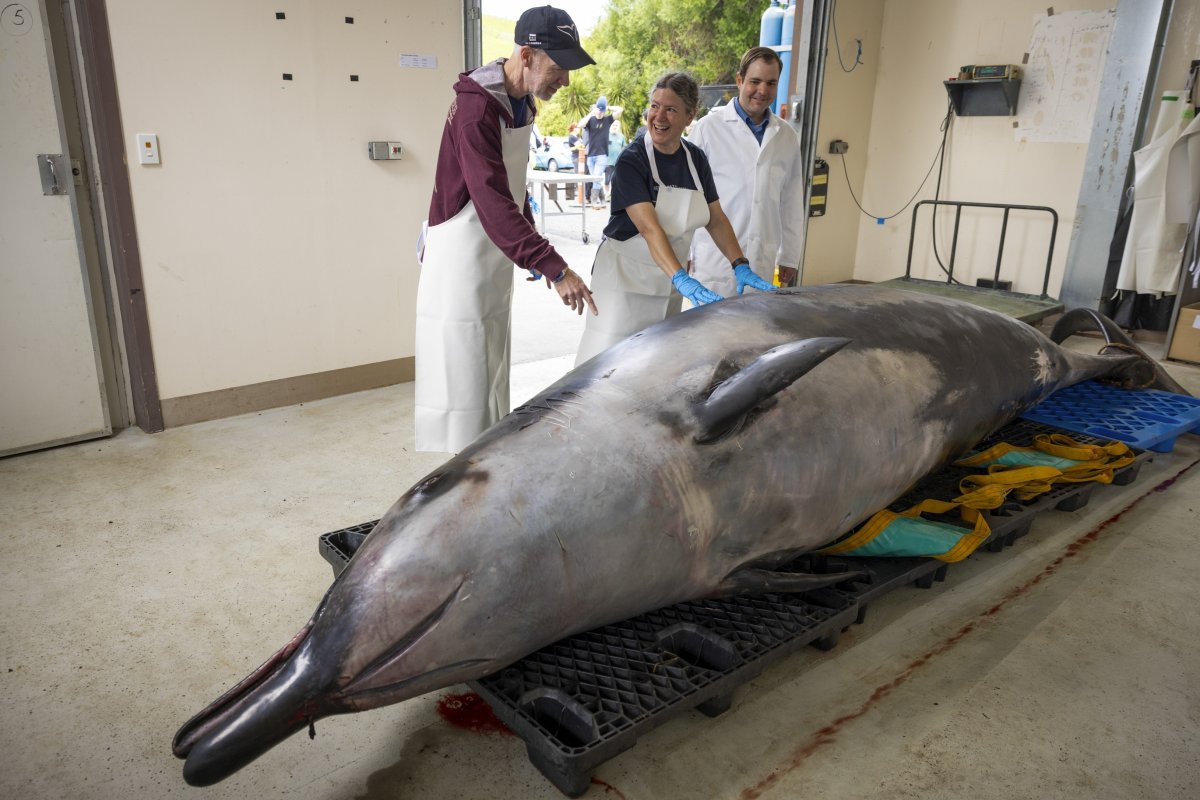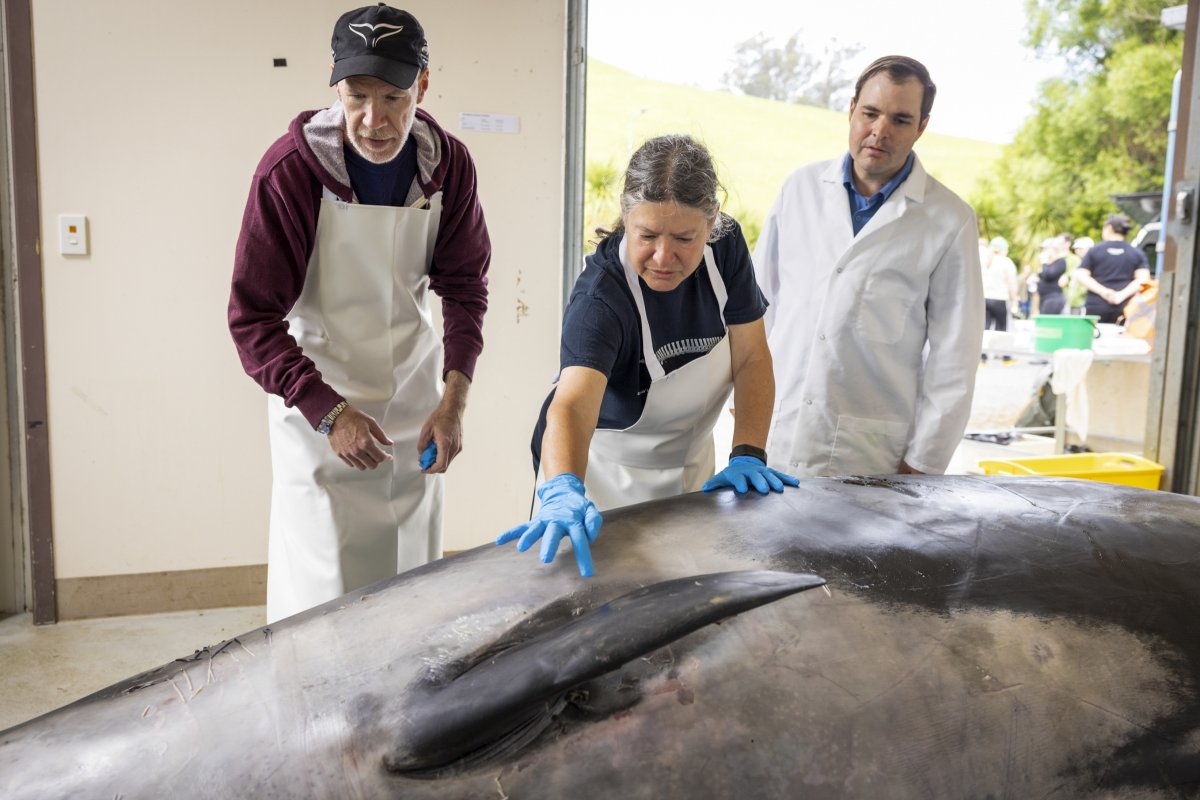Scientists in New Zealand have begun a historical dissection of the world’s rarest whale species.
The discovery of a male whale – which washed up near the Otago fishing village of Taieri Mouth in July – is the seventh ever found and the first to be dissected. Whales of this species have never been seen alive.
Its dissection is carried out at the Invermay Agricultural Research Center near Dunedin.
Researchers hope to discover details about the animal’s biology, including its diet, anatomy and unique sound production mechanisms.
The process involves a rigorous and culturally sensitive approach in collaboration with representatives of the Māori community, New Zealand’s indigenous people who consider whales sacred.
“I can’t tell you how extraordinary it is,” said Anton van Helden, senior marine science adviser for New Zealand’s Department of Conservation. After studying whales for 35 years, he described the process as “incredible.”

AP Photo/Derek Morrison
Why is whale discovery important?
Beaked whales, which include the beaked whale, are the deepest-diving mammals and so rarely surface that scientists have until now failed to spot them alive.
New Zealand is considered a global hotspot for whale strandings, with more than 5,000 recorded incidents since 1840.
This means that despite their reclusive nature, 13 of the world’s 24 known species of beaked whales have been found in New Zealand waters.
Researchers suspect that the country’s unique geography, with shallow, sloping beaches, contributes to the frequency of these events by potentially confusing the whales’ navigation systems.

AP Photo/Derek Morrison
Traditional Māori practices throughout the study
Because New Zealand Māori revere whales to such an extent, the dissection will be quiet, methodical and slower than normal, allowing members of the nearby iwi, or tribe, to be consulted at every turn.
This includes sharing knowledge, prayers and other practices.
“According to our beliefs and traditions, this whale is a gift from Tangaroa, the deity of the ocean. It is very important for us to respect that gift and honor the whale,” said Tumai Cassidy of the people of Te Rūnanga Ōtākou.
The iwi will keep its jawbone and teeth for cultural preservation, while the whale’s skeleton will be put on display in a museum. Advanced imaging techniques, including CT scanning and 3D printing, will allow scientists to replicate parts of the whale for further research.
“There could be parasites that are completely new to science and that only live in this whale,” says Van Helden. “Who knows what we will discover?”

AP Photo/Derek Morrison
Impact on future whale research
Previous discoveries of whales include isolated bones found in New Zealand and Chile in the late 19th and 20th centuries.
DNA sequencing in 2002 confirmed that these specimens belonged to a single species distinct from other beaked whales. In 2010, two complete whales were found on a beach in New Zealand, but no scientific research on the species has been conducted to date.
The whale’s pristine condition is of particular interest to researchers, offering potential insights into the species’ diet, behavior and biology.
Researchers noticed shark marks on the whale’s body, typical of deep-sea species and unrelated to the cause of death.
Joy Reidenberg, a comparative anatomist from the Icahn School of Medicine at Mount Sinai in New York, traveled 9,000 miles to be part of the discovery.
“What we’re interested in is not just how these animals died, but how they lived,” Reidenberg said.
This article contains reporting from The Associated Press



